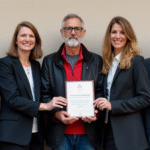Heavy Rains Cause Damage and Disruptions in Mexico City
The intense rains in Mexico City have affected at least 116 residences with minor damages in the colonias of the Álvaro Obregón, Iztacalco, and Venustiano Carranza alcaldías. The Línea 8 of the Metro experienced flooding, causing service interruptions. The city’s drainage system, managed by the Sistema de Transporte Colectivo (STC), requires comprehensive rehabilitation, especially in the pumping stations. The Línea 2 will undergo complete reconstruction of its pumping stations.
June’s accumulated rainfall reached 33.7 million cubic meters, the highest since 1968. This unusual volume is a direct result of climate change, altering precipitation patterns in the capital.
The Impact of Waste
In addition to drainage efforts, which have removed 172,000 tons of garbage—including 15 tons from the Becerra Dam—the city’s waste management system faces deeper issues. The head of the Secretaría de Medio Ambiente (Sedema), Julia Álvarez Icaza, explained that warmer atmospheres retain more moisture, leading to shorter but more intense storms.
Upcoming Initiatives for Waste Management and Infrastructure
Clara Brugada Molina, the head of government, announced “Ciudad Circular,” a program starting in September. This initiative aims to transform waste management through economic incentives, emphasizing that separated waste has value. Furthermore, 40 hydraulic-mechanical units will arrive in the city within 15 days, investing 700 million pesos. These machines will not only manage water during rain but also clean the drainage networks, significantly improving efficiency in flood-prone areas over the next six years.
Investment in Hydradric Infrastructure
In response to the need for improved water infrastructure, the 100-point Acupuntura Hídrica program was launched. This initiative, investing 30 million pesos in 2025, focuses on rehabilitating and constructing infiltration works in strategic zones like Iztapalapa, Álvaro Obregón, and Milpa Alta. Each point can infiltrate an average of 25 liters per second, with some sites reaching up to 100 liters per second. The goal is to infiltrate a total of 2,500 liters per second, turning the current challenges into solutions.
Key Questions and Answers
- What is the severity of the current rainy season in Mexico City? It is the most critical in 57 years, with June’s rainfall being the highest since 1968.
- How has climate change affected Mexico City’s precipitation patterns? Climate change has altered precipitation patterns, leading to unusually high volumes of rain in shorter, more intense storms.
- What measures are being taken to address waste management issues? The “Ciudad Circular” program aims to transform waste management through economic incentives, emphasizing that separated waste has value. Additionally, 40 hydraulic-mechanical units will be acquired to improve drainage network cleaning.
- What investments are being made to improve Mexico City’s water infrastructure? The 100-point Acupuntura Hídrica program will invest 30 million pesos in 2025 to rehabilitate and construct infiltration works in strategic zones, aiming to infiltrate 2,500 liters per second.






